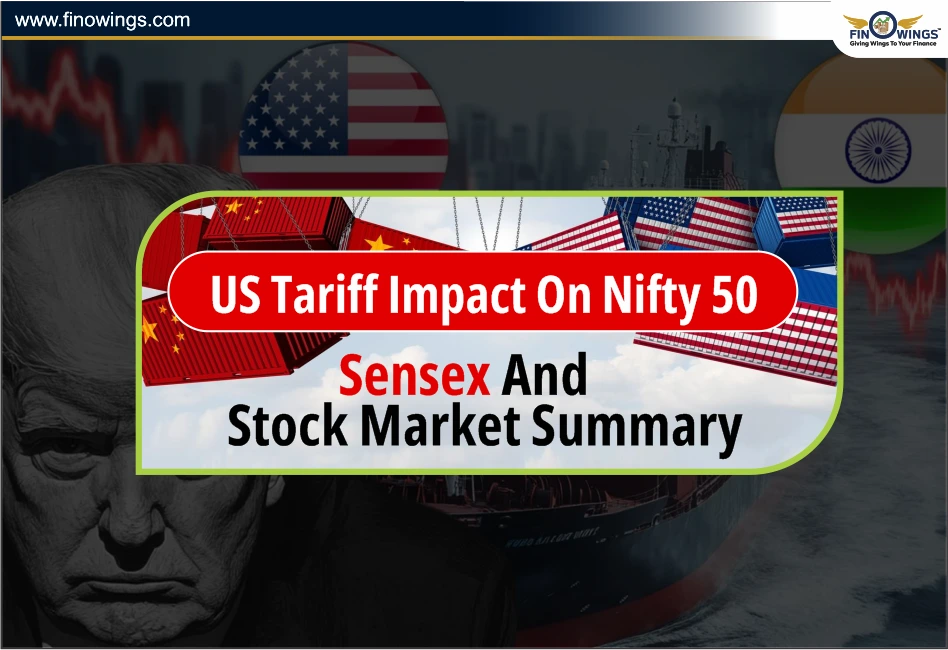Home >> Blog >> Stock Market Crashed: More challenging days ahead for Investors?
Stock Market Crashed: More challenging days ahead for Investors?

Table of Contents
Stock market fall
Today the stock market opened 1.4% this morning on a significant gap-down, down 329 points due to three days of moderate declines. In this blog, we will take a look at the reasons behind the stock market crash today, and explain the stock market crash today reasons with some macroeconomic indicators that are expected to influence market trends next year. So keep reading.
Detailed Video
Part 1: Why did the stock market crash today
In this segment, we will see why stock market is crashing today, we will cover up the key factors behind the stock market crash today.
1. Fed Rate Cut Announcement
The U.S. Federal Reserve lowered interest rates by 25 basis points as was expected by the market. However, it has fueled the uncertainty in the market due to concerns about the future:
-
It intends to cut rates only twice next year rather than 4 times.
-
This is indicative of a slow reduction in interest rates aimed at inflation control from the side of the Fed.
-
It seems to have shifted its inflation goal to 2.4% from 2%.
-
As world markets follow Fed actions closely, this cut also affected Indian markets.
2. Earnings Recovery Uncertain
-
After dark corporate earnings in Q1 and Q2, all eyes are now on the results for the December quarter (Q3) with a recovery expected, although not substantial until Q4.
-
The movement in Nifty 50 in the market depends on earning growth. In the absence of any clear recovery, investors remain hesitant, thereby keeping the market vulnerable to reactions to minor negative news.
3. Displacement of FII Investment
-
Foreign Institutional Investors have started selling stocks, moving away from the equity market to invest in SME IPOs.
-
As per data provided by Prime Database, it attracted anchor investors, including large foreign portfolio investors, with 20-25 SME IPOs.
-
With the likes of NAV Capital and Astorne Capital happening to be involved in above 20 SME IPOs this year, their exposure to equities is diminished.
-
Overall, this mass FII sell-off has contributed significantly to the overall market weakness.
Part 2: Microeconomic Factors Affecting Market Sentiment
1. Macroeconomic Headwinds
India's trade deficit in November has been record-high creating a concern over the Economy.
- Trade Deficit Impact:
-
A trade deficit occurs when imports are greater than exports, resulting in the depreciation of the currency since more foreign currency is required for imports.
-
The Indian Rupee has touched an all-time low of Rs.85, increasing import costs and further pushing the deficit up.
-
India cut its GDP forecast for Q2, marking its lowest in the last two years-slowing economic momentum.
2. Food Price Inflation
Food inflation skyrocketed to 10.87% in October 2024, compared to 9.24% in September and 6.61% back a year ago. This surge will result in:
-
Higher Cost of Living: Costs will go higher, and that will lead to wage hikes by workers, further reducing corporate earnings.
-
Price Hikes: The costs incurred by businesses for agriculture and transport will see an upsurge, which will lead to a price hike by them.
-
Real Income: Households will feel burdened with reduced real income.
One of the key drivers of food inflation is the increase in money supply:
Money Supply Measurement:
M1: the inclusion of cash and demand deposits, these are the most liquid forms of money.
M2: adds savings and time deposits into M1.
M3: includes M2 as well as institutional money market funds and a few other less liquid assets.
The continued increase of M1, M2, and M3 is still indicative of excess liquidity, and some inflation is therefore being nurtured since.
What Should Investors Do Now?
As an investor, if you are confused about what to do in this falling market then we have some things to discuss that can help you out.
- Keep calm and composed as the stock markets are riskier, for both domestic and international factors.
- No panic selling is a good strategy, and for future investors, this decline in the market may bring buying opportunities.
- Experts advise keeping track of levels that are important for Nifty and Sensex and to refrain from impulsive decisions.
- It is equally important to identify those sectors that would receive policy reforms or budget announcements in the forthcoming months, and that would thus benefit.
Indian Stock Market- More challenging days ahead for investors?
- According to a report released by Prime Securities, the year 2025 shall be quite challenging for the Indian market.
- A negative study suggests a lower projection of returns for Nifty during 2025 which is also anticipated to fall below 10% on returns.
- Predictions like this flow majorly from the fact that the global economic slowdown is likely to continue due to many factors e.g.inflation shadow, geopolitical risks, and a slower economic recovery, affecting stock market performance.
- Prime Securities recommends an active, selective approach to stocks and sectors that are expected to outperform in such tough conditions in 2025; rather not be the passiveness that has unfortunately characterized so much of this year's investment.
Conclusion
-
A near-simultaneous kitchen sink full of fright has crashed the markets today:
-
Caution from the Fed in its delay on rate cuts.
-
Weak visibility on the margins for corporate earnings.
-
FIIs focused on IPOs instead of equities.
The additional macroeconomic issues in India such as high inflation, record trade deficit, and currency depreciation have further aggravated the market volatility. The market direction going forward will depend on earnings recovery with some noticeable positive triggers on the way such as the Union Budget 2025. Until then investors might as well brace themselves for intermittent volatility.

DISCLAIMER: NOT a buy or sell recommendation. No investment or trading advice is given. The content is purely for educational and information purposes only. Always discuss with an eligible financial advisor before investing.
Frequently Asked Questions
The market fell sharply due to a number of factors: The uncertainty concerning the Federal Reserve's cautious attitude regarding interest cuts, lackluster earnings recovery in the previous quarters, and the US$ 1.5 million in output proceeds resulted in equity sell-offs as FIIs shifted focus to SME IPOs
India's macroeconomics have certainly added volatility to the market: Trade Deficits - a record high trade deficit has caused the Indian Rupee to depreciate and, in turn, the cost of imports has risen; Food Inflation - higher prices of foodstuffs have raised the cost of living and reduced real incomes while biting into profit margins; and an Economic Slowdown - a reduced GDP growth forecast shows states that economic momentum is slowing down
There are several reasons such as Union Budget 2025 and the expectation for the recovery of Q4 earnings growth that may rear back market volatility anytime in future. It is prudent to maintain an even temper while keeping your focus on longer term principles.
















